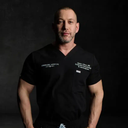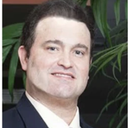Thank you for your question. You are 20-years-old, and started losing hair at 16. Although you don't have any bald spots, you have very thin hair, and your hairline is receding, so you say you look 40. You are describe the treatment strategies you’ve employed so far which are 3 PRP injections spaced about 6 weeks apart, and laser therapy for 30 minutes, 3 times a week. You feel like you’ve not gotten any improvement, and you’re looking for some potential options to help deal with your hair loss.





